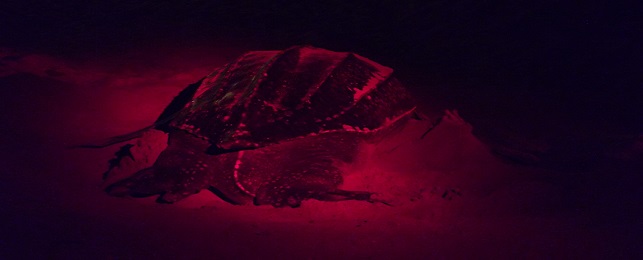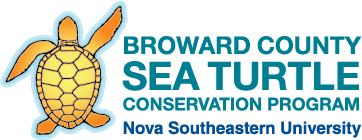
Threats to Sea Turtles
Ever wonder what challenges sea turtles face in our oceans today? Well, it's pretty tough out there for these amazing creatures. Sadly, six out of the seven sea turtle species worldwide are now listed as threatened or endangered, and most of these problems are actually caused by us humans. While there are a lot of different dangers, understanding them is the first big step towards helping out. Below, we'll break down some of the most common threats these magnificent animals encounter.
- Predation – Animals such as ghost crabs, raccoons, foxes, snapper, grouper, mahi mahi, and sharks can consume sea turtles depending on the geographic location and life stage of the turtle . Predation is the only natural threat that sea turtles face.
- Bycatch and Entanglement in Fishing Gear – Sea turtles are often captured on fishing lines and trawl nets incidentally. When this happens, they often drown as they become trapped and cannot surface to breathe. Fishing gear as well as abandoned gear can also entangle them, resulting in the same fate.
- Marine Debris and Trash – When people litter, the wind and water act as conveyor belts, pushing the trash into storm drainage systems, which lead to freshwater streams and rivers, all of which eventually lead to the sea. Because of this, marine life is forced to live with and risk consuming trash littering their marine habitats throughout their lifetimes.
- Coastal Development and Beach Erosion – To protect these beachside properties, we build armored structures on our beaches. Unlike natural dunes, which have plants with roots that are good at holding onto sand, concrete walls are terrible at keeping sand on the beach, and there is typically a lot of erosion along seawalls.
- Beach Furniture – Causes obstructions to both nesting females and hatchlings. Obstructions like this can cause sea turtles to not complete their nesting processes or become trapped.
- Light Pollution – Light pollution is any artificial light that hits the beach or surrounding ecosystems. Since turtles navigate using light at night, they can become disoriented by streetlights and other lights. Both nesting females and hatchlings look for the brightest horizon out there on the beach to know which way to go. In a natural setting, the dunes will be super dark, and the ocean will be slightly brighter, reflecting the light from the moon and stars.
- Climate Change – Changing temperatures is causing sea level rise, changes in the dynamics of currents in the ocean, and more, which all can affect the biological and ecological processes of sea turtles, including feeding and migration patterns. Warming temperatures can also lead to an increase in female sea turtles being produced, which could cause issues in the future for reproduction.
- Illegal Poaching – Sea turtles and their eggs are still hunted today by people, whether it be for their meat, eggs, or shell. Since sea turtles are protected, it is illegal to take or own any sort of sea turtle items such as, eggs, shells, skulls, etc.
- Boat Strikes – When sea turtles surface to breathe, they become susceptible to boat strikes. This is especially apparent with green sea turtles, as they inhabit nearshore waters that people are often boating in recreationally. As sea turtles surface to breathe, they can often be in the direct path of a boat, resulting in a boat strike; which can harm turtles and often lead to death.
- Chemical Pollution and Oil Spills – Chemicals and oils can enter the body systems of sea turtles, causing direct harm to bodily functions. Chemicals can also build up in tissues over time, which can result in disease and/or death. This can also hinder them indirectly through their items of prey, as the same thing can happen to those organisms as well.
The Synergistic Impact
Unfortunately, many of these threats do not act in isolation. They often work synergistically, meaning their combined impact on sea turtle survival and other wildlife is far greater than if each threat occurred on its own. While the challenges are immense, there are numerous ways you can get involved and help make a difference within the conservation community.
Contact Us
E-mail: seaturtles@nova.edu
Phone: (954) 262-3672
Sea Turtle Emergency Response Line
If you see a dead, sick, or injured sea turtle or hatchling(s) in Broward County, call (954) 328-0580
For over 30 years, NSU has been contracted by Broward County to implement and manage the Broward County Sea Turtle Conservation Program, which monitors sea turtle nesting activity on over 24 miles of Broward County beaches.
